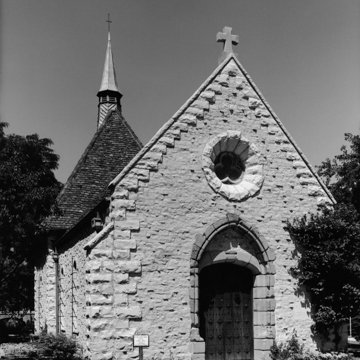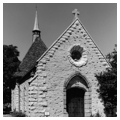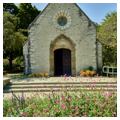Milwaukee is rich with immigrant-influenced architecture, but this little stone Gothic chapel is an immigrant itself. Originally built in the French village of Chasse, twelve miles south of Lyon, it was disassembled in 1927, brought to the United States, and reassembled on the Long Island estate of Gertrude Hill Gavin (daughter of railroad developer James Hill). In 1964 the estate’s new owner, Marc Rojtman, donated the chapel to Marquette University, and the building was again carefully taken apart for the trip to Milwaukee. Completed in 1966, this final reconstruction included some minor changes to the original French plan. Originally called the Chapelle de St. Martin de Sayssuel, the chapel was renamed in honor of Joan of Arc, the French heroine who was believed to have prayed before a statue inside. Afterward, according to legend, she kissed the stone on which the statue stood; the stone remains in the chapel. The chapel floor contains the tomb of a French knight, the Chevalier de Sautereau (1473–1524).
You are here
St. Joan of Arc Chapel
If SAH Archipedia has been useful to you, please consider supporting it.
SAH Archipedia tells the story of the United States through its buildings, landscapes, and cities. This freely available resource empowers the public with authoritative knowledge that deepens their understanding and appreciation of the built environment. But the Society of Architectural Historians, which created SAH Archipedia with University of Virginia Press, needs your support to maintain the high-caliber research, writing, photography, cartography, editing, design, and programming that make SAH Archipedia a trusted online resource available to all who value the history of place, heritage tourism, and learning.





